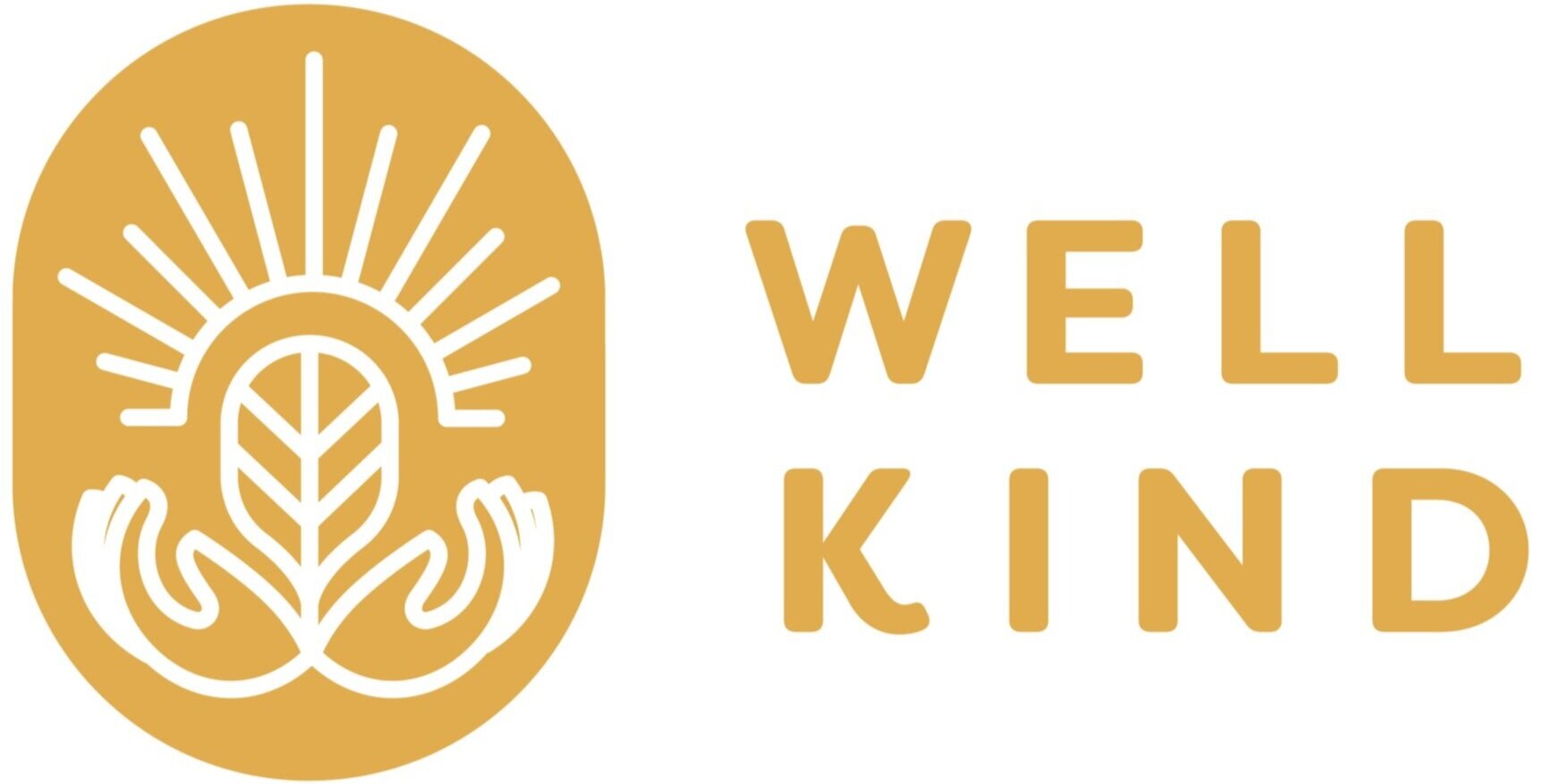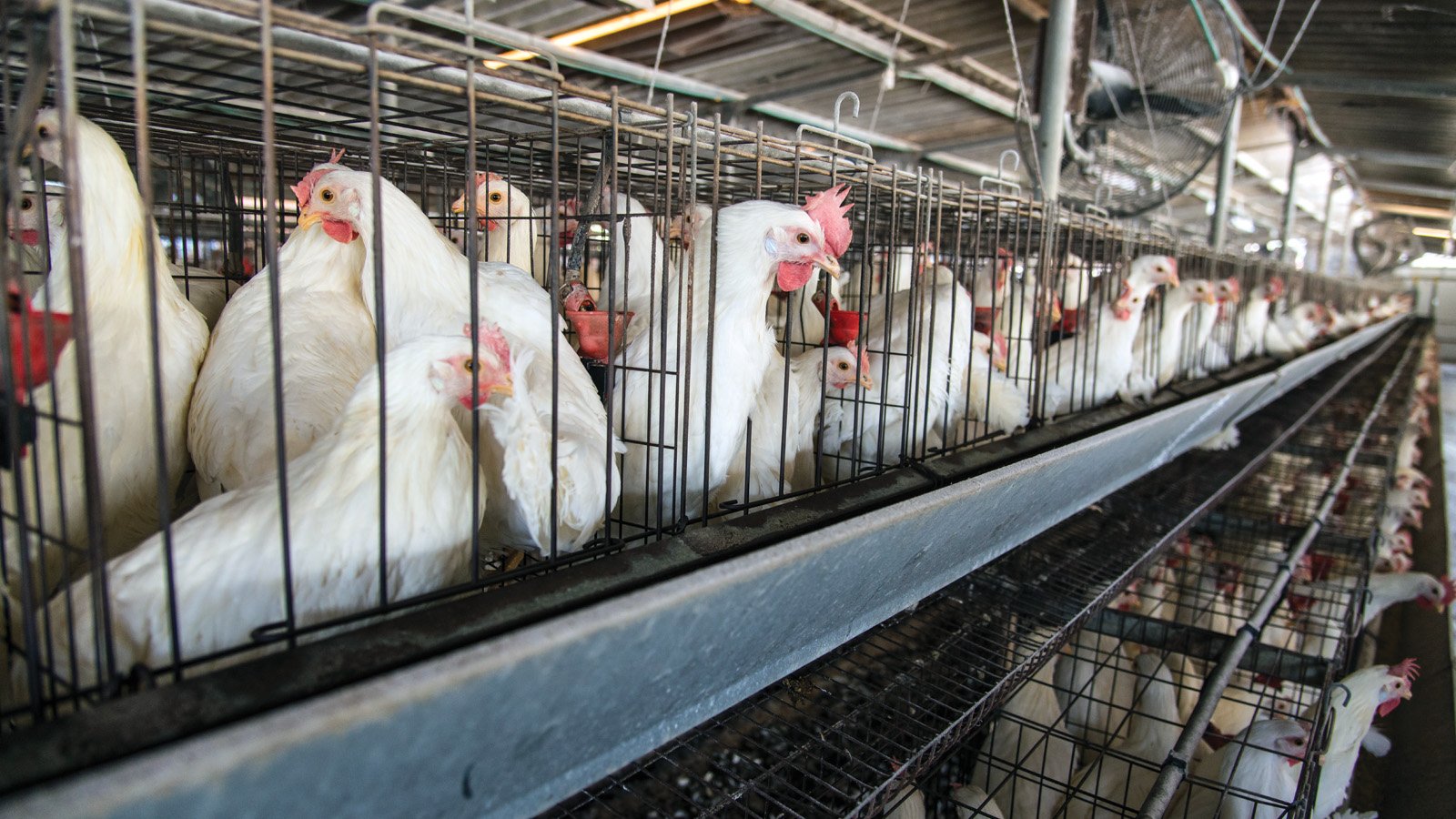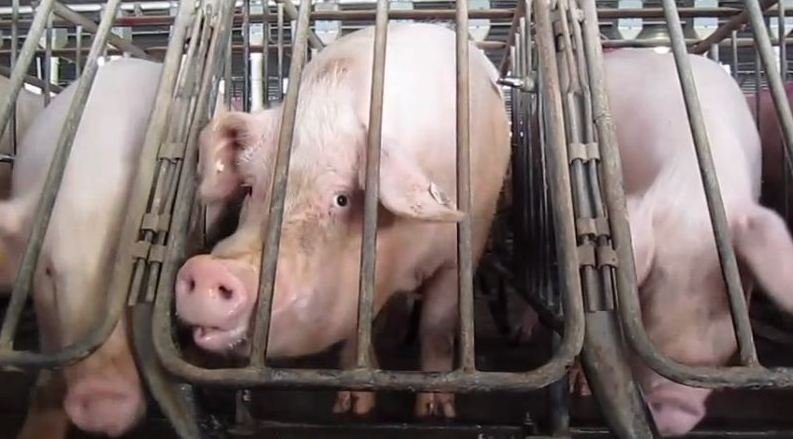What Overturning Proposition 12 Means for Farm Animals
By Katherine Ritter, WellKind Forestry Intern
Katherine Ritter was an intern for WellKind Forestry during our summer 2022 session, exploring animal agriculture and other environmental topics.
In 2018, nearly two-thirds of California voters approved Proposition 12, an initiative that banned the sale of domestic and out-of-state products made from animals that were raised in gestation crates—confinement cages that didn’t meet the minimum space requirements defined by the proposition (Moreland et al., 2018).
Prop 12 protected animals from one of the crueler practices in factory farming. But, this October, guaranteed protection for these animals may be a thing of the past.
Earlier this year, the Biden Administration filed a brief to challenge Proposition 12, specifically pointing to precedent under the Commerce Clause. The Supreme Court is scheduled to hear oral arguments starting in October (Grzincic, 2022).
Proponents of Prop 12 are worried that the Supreme Court’s decision to hear arguments on a case where there wasn’t any disagreement in lower courts might indicate a desire among judges to strike down the proposition.
Source: Animal Legal Defense Fund.
ARGUMENTS FOR PROP 12
Overturning Prop 12 will harm consumer welfare, human health, and most importantly, animals’ lives. To properly understand the need for Prop 12, we have to explore the current conditions of slaughterhouses and factory farms.
Shortly after birth, a baby calf is taken from its mother and confined in a tiny, metal cage where it cannot move its legs or turn its neck. After growing in these grueling circumstances, at just four months old, the calf is sent to a slaughterhouse.
Similar situations exist for pigs, hens, and other livestock.
There is no mistaking that these conditions are inhumane. When passed in 2018, the proposition had the endorsements of The Humane Society of the United States, the ASPCA, and nearly 500 California veterinarians all in favor of strengthening animal protection laws in California (Moreland et al., 2018).
Also in 2018, the Center for Food Safety and the National Consumers League both endorsed Proposition 12, as it “reduces the risk of people being sickened by food poisoning and factory farm pollution, and helps family farmers” (Moreland et al., 2018). A study from the Humane Society of the United States (2011) backed up the finding that cramming livestock in small, dirty cages increases the risk of food poisoning, growing the threat of sickening the public.
Over a billion eggs from caged chickens have been recalled because they’ve carried Salmonella, a bacterial infection that can be life-threatening. In fact, even Poultry World, a magazine covering the egg and poultry farming sectors, agreed that “Salmonella thrives in caged housing” (Dewulf & Berkhout, 2018).
Animal confinement cages also have implications for air and water pollution. In 2019, the American Public Health Association “called for a moratorium on new animal confinement operations because they pollute the air and ground water, and diminish the quality of life for nearby homeowners” (Moreland et al., 2018). Raising pigs in gestation crates and other livestock in concentrated environments creates huge cesspools of waste that is often not properly disposed of, so that it runs off into nearby lands and bodies of water.
According to the Center for Biological Diversity, the most common environmental threats from Concentrated Animal Feeding Operations are “contamination…from nutrients pathogens, heavy metals, pharmaceuticals, and ammonia; overconsumption of groundwater resources; harm to endangered or threatened species and habitats; [and the] release of greenhouse gas emissions” (2019).
Lastly, when the proposition was passed in 2018, even voters outside of California were voting with their dollars. A study in Food Policy Journal analyzed consumer purchasing behavior and found that “the U.S. population may be willing to pay $25,246 million/year more in aggregate taxes to support a ban [on gestation crates]” (Tonsor et al., 2009).
Source: Wikimedia.
ARGUMENTS AGAINST PROP 12
Upon reading the arguments against Prop 12, as found on the Official Voter Information Guide website, I found that most of the arguments seemed faulty, including the Commerce Clause argument. Moreover, these arguments overlooked the majority of the population that voted on Prop 12 in 2018.
Those against Prop 12 have used the fiscal impact statement found in the voter information guide as their main argument: “Potential decrease in state and local tax revenues from farm businesses, likely not to exceed the low millions of dollars annually. Potential state costs ranging up to ten million dollars annually to enforce the measure” (Legislative Analyst’s Office, 2018).
However, at the end of the day, the money is going toward making systemic changes to protect animals against animal cruelty—is that not worth temporary changes in revenue? In 2018, with the passing of Prop 12, voters made their priorities clear, prioritizing animal welfare over capital.
Some groups, like the Humane Farming Association, have tried to spin the proposition as a step back for animal cruelty protections. However, according to Prevent Cruelty CA, the Humane Farming Association “has a history of joining polluting factory farms in opposing animal cruelty laws and has been supported by animal fighters, with one underground publication boasting that HFA’s attack on animal protection charities ‘helps the cockfighters!’” (Moreland et al., 2018). Clearly, the HFA attempted to spin the tale of Prop 12 for their own financial gain.
When a similar proposition was passed over a decade ago, some factory farms found ways around the law and continued to confine animals in illegal cages. This is why Prop 12 was needed in 2018. Prop 12 strengthened cruelty laws by “providing improved protections, including better living conditions, minimum space requirements, and cage-free housing, with a phase-in timetable that safeguards family farmers” (Moreland et al., 2018), an agreement that provided both animals with better living conditions and farmers with a reasonable time frame to implement the change.
Thus, the likely Supreme Court’s reversal of Prop 12 threatens all the progress made by this proposition.
LET’S TALK ABOUT THE COMMERCE CLAUSE
Essentially, the whole Supreme Court case hinges on the basis of the Commerce Clause of the Constitution that gives Congress the power “to regulate commerce with foreign nations, and among the several states, and with the Indian tribes.” In practice, Congress has used this clause to regulate the states’ ability to interfere with trade between other states.
Those against Prop 12 argue that the ban on sales of livestock in California that were raised in gestation crates in other states violates the Commerce Clause for intervening in interstate trade.
However, at the moment, California’s share of the pork industry is considered pretty small, about .12% according to a study published by the USDA (2022).
For this reason, among others, Harvard constitutional law professor Laurence Tribe argues that Prop 12 doesn’t place an unconstitutional ban on interstate commerce: “It’s undoubtedly true that it will have most of its impact outside California, but they’re not exempting California. Even though the industry is smaller in California, it’s not insignificant, and it has to comply with these rules just as fully as [producers] in Iowa and elsewhere do” (Bolotnikova, 2022).
In the Ninth Circuit Court’s ruling in alignment with Prop 12, judges reasoned that,
“A state law may require out-of-state producers to meet burdensome requirements in order to sell their products in the state without violating the dormant Commerce Clause…Even if a state's requirements have significant upstream effects outside of the state, and even if the burden of the law falls primarily on citizens of other states, the requirements do not impose impermissible extraterritorial effects” (United States Court of Appeals, Ninth Circuit, 2021).
We will see how these arguments against the Commerce Clause play out in front of the Supreme Court judges.
Overturning Prop 12 holds implications for animal rights, human health and food standards, environmental protection, and so much more. Come October, the people of California can only hope that the Supreme Court understands the progress made by this Proposition and will choose to protect it.
REFERENCES
Bolotnikova, M. (2022). Five things to know about the SCOTUS challenge to California’s ban on
extreme farm animal confinement. The Counter. https://thecounter.org/california-proposition-12-animal-welfare-supreme-court/
California Legislative Analyst’s Office. Establishes New Standards for Confinement of Certain Farm Animals; Bans Sale of Certain Non-Complying Products. Initiative Statute. Legislative Analyst’s Office. (2018). The California Legislature’s Nonpartisan Fiscal and Policy Advisor. https://lao.ca.gov/BallotAnalysis/Proposition?number=12&year=2018
Dewulf, J. & Berkhout, N. (2010). Salmonella thrives in cage housing. Poultry World. https://www.poultryworld.net/poultry/salmonella-thrives-in-cage-housing/
Environmental Impacts of Extreme Animal Confinement. The Center for Biological Diversity. (2019). https://www.biologicaldiversity.org/takeextinctionoffyourplate/factory_farms/index.html#:~:text=Contamination%20of%20air%2C%20water%2C%20and,greenhouse%20gas%20emissions%20%5B4%5D.
Grzincic, B. (2022). Supreme Court will hear challenge to Prop 12, Calif’s animal caging bill.
Hog welfare laws cover 9 States and 3 percent of the national herd in 2022. The United States
Department of Agriculture Economic Research Service. (2022). https://www.ers.usda.gov/data-products/chart-gallery/gallery/chart-detail/?chartId=103505
Moreland, C., Reynolds, J., Decoriolis, A., Emerson, M., Mills, E., Brown, P. T., Miller, B., Finley, L., Hodges, B., Peterson, J., & Haggerty, B. (2018). Prop 12 Arguments and Rebuttals. Official Voter Information Guide, 70-71 https://vigarchive.sos.ca.gov/2018/general/propositions/12/title-summary.htm
National Pork Producers Council v. Ross. United States Court of Appeals, Ninth Circuit. (2021).
https://casetext.com/case/national-pork-producers-council-v-ross-1
The Humane Society of the United States. An HSUS Report: Food Safety and Cage Egg Production. The Humane Society of the United States. (2011).
https://www.humanesociety.org/sites/default/files/docs/report-food-safety-eggs.pdf
Tonsor, G. T., Wolf, C., & Olynk, N. (2009). Consumer voting and demand behavior regarding
swine gestation crates. Food Policy, 34(6), 492-498. https://www.sciencedirect.com/science/article/abs/pii/S0306919209000566?via%3Dihub



